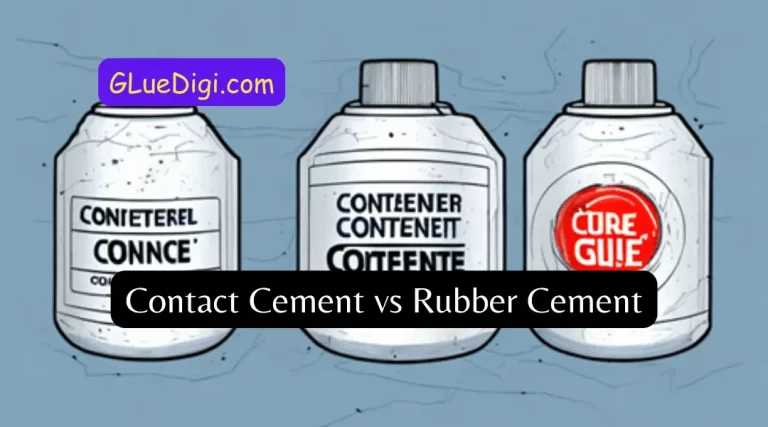Shoes play a crucial role in our daily lives, protecting our feet and ensuring safe movement. However, with frequent use, shoes can experience wear and tear, leading to the need for repairs.
One of the most critical aspects of repairing shoes is selecting the right glue. Choosing the wrong glue for your shoe repair needs can result in a less durable repair or even damage to your shoes. Therefore, it is essential to understand the different types of glues available and their suitability for specific shoe materials and repair types.
When it comes to choosing glue for shoe repairs, several factors should be considered before making a decision. This includes the type of material used in your shoes, as well as the type of repair needed. In addition, features such as waterproofing capabilities and flexibility may also be important considerations depending on your intended use for repaired shoes.
By understanding these factors and considering them carefully when selecting a glue type, you can ensure that your shoe repairs are effective and long-lasting while keeping you safe during everyday activities.
Key Takeaways
- Different types of glues are available for specific shoe materials and repair types.
- The selection of glue should be based on factors such as shoe material, type of repair, waterproofing, and flexibility.
- Testing the adhesive on a small area of the shoe before applying it to larger sections is recommended.
- Choosing the right glue can prolong the life of footwear and affect the overall comfort and performance of shoes.
Understand the Different Types of Shoe Glues
A comprehensive understanding of the various types of shoe glues available in the market is essential to make an informed decision on which glue to use for shoes.
The most common types of shoe glues are cyanoacrylate, polyurethane, and contact cement.
Cyanoacrylate glue is a fast-acting adhesive that bonds instantly but may not be suitable for all shoe materials.
Polyurethane glue is a strong adhesive that works well with leather and rubber but requires longer drying times and can be messy to apply.
Contact cement, on the other hand, creates a strong bond quickly and works well with porous materials like canvas and suede.
It’s important to consider application techniques and drying times when selecting a shoe glue that will work best for your needs.
Before making a decision, it’s also crucial to consider the material of your shoes since some adhesives may not bond well with certain materials.
With this information in mind, you’ll be better equipped to choose the right type of glue for your shoes without risking damage or compromising safety.
Consider the Material of the Shoe
When considering the material of a shoe, it is important to take into account the type of adhesive that will be used.
This is because different materials require different types of glue for optimal bonding.
Leather shoes, for instance, may require a stronger adhesive than rubber or fabric shoes due to their durability and resistance to wear and tear.
Synthetic materials, on the other hand, may require a more specialized type of glue in order to achieve a strong bond that can withstand frequent use.
Leather
Leather shoes require a specialized adhesive that is able to bond with the natural fibers of the leather without causing damage or weakening the material. When it comes to leather shoe care, using the right glue can make all the difference in prolonging the life of your footwear.
To ensure that you are using an appropriate adhesive for your leather shoes, it is important to consider factors such as strength, flexibility, and ease of use. Additionally, before applying any glue to your leather shoes, be sure to clean them thoroughly using a gentle cleaner specifically designed for leather shoe cleaning.
Once cleaned and prepped, carefully apply the adhesive following manufacturer instructions. It is also recommended to allow ample time for drying and curing before wearing your newly repaired or reinforced leather shoes.
Now let’s explore which type of glue works best for rubber soles.
Rubber
Rubber is a commonly used material in shoe manufacturing due to its durability and slip-resistant qualities. When it comes to rubber sole adhesion, there are several options available for manufacturers.
Here are four key factors to consider when choosing the right glue for rubber soles:
1) Strength – The adhesive should be strong enough to keep the sole in place even under heavy use.
2) Flexibility – The glue should allow for some flexibility in the sole while still maintaining a secure bond.
3) Drying Time – Quick-drying glues can speed up production time but may not offer as strong of a bond as slower drying options.
4) Waterproofing Options – For shoes that will be exposed to moisture, waterproofing the adhesive or using a waterproof glue can help prevent separation between the sole and upper.
By carefully considering these factors, shoe manufacturers can choose the best adhesive for their specific needs. Moving onto fabric, another important factor to consider is breathability.
Fabric
The breathability of fabric is a crucial aspect to consider in shoe manufacturing, as it can affect the overall comfort and performance of the shoe.
When choosing a glue for fabric shoes, it is important to select one that will not compromise this feature.
Fabric glue alternatives include cyanoacrylate, epoxy, and polyurethane, which are all strong adhesives that bond quickly and securely.
However, before using any type of glue on fabric shoes, it is important to follow some tips for successful application.
These include cleaning the surface thoroughly with rubbing alcohol or acetone, applying the glue evenly and thinly with a brush or applicator tip, and allowing ample drying time before wearing the shoes again.
It is also recommended to test the adhesive on a small area first before applying it to larger sections of the shoe.
With these precautions taken into consideration, fabric glue can be an effective solution for repairing or customizing shoes made from fabrics such as canvas or denim.
As we move onto synthetic materials in shoe manufacturing, it is important to note how their properties differ from those of natural fabrics when selecting an appropriate adhesive.
Synthetic Materials
Previously, we discussed the use of glue for fabric shoes. Now let’s move on to synthetic materials.
Synthetic materials are becoming increasingly popular in shoe production due to their durability and affordability. One of the advantages of using synthetic materials is that they can be made to mimic the look and feel of natural leather without harming animals or damaging the environment. However, there are also some common issues with synthetic shoe materials such as cracking, peeling, and discoloration.
Therefore, it is important to choose a glue that is specifically designed for synthetic materials in order to ensure a strong and long-lasting bond. When repairing shoes made of synthetic materials, it is important to determine the type of repair needed based on the specific issue at hand before selecting an appropriate adhesive.
Moving forward towards determining the type of repair needed…
Determine the Type of Repair Needed
To accurately address the repair needed for shoes, it is crucial to first determine the type of damage present through careful observation and analysis.
Assessing damage involves examining the extent of wear and tear, identifying any holes or tears in the material, or determining if there are any missing parts such as shoelaces or buckles.
Once the type of damage has been identified, different repair techniques can be used to effectively fix the issue.
Repair techniques may include stitching, gluing, replacing worn-out soles or heels, or patching up holes with new materials.
It is important to note that some types of shoe materials may require specific adhesives that work best for that material.
When assessing damage and choosing a repair technique, it is essential to prioritize safety over aesthetics to avoid causing further harm to oneself while wearing damaged shoes.
After assessing the damage and selecting an appropriate repair technique, it is also crucial to look for special features on one’s shoes such as waterproofness or breathability that might affect how well certain glues will work on them without compromising those features.
Look for Special Features
Examining the special features of one’s shoes is essential in selecting the appropriate repair technique to ensure that these features are not compromised.
When it comes to shoe glue, durability versus flexibility is a crucial factor to consider. Shoes that undergo frequent flexing require a flexible adhesive that can withstand constant movement without cracking or breaking. On the other hand, durable glue may be necessary for heavy-duty shoes like work boots or hiking boots which experience more wear and tear.
Waterproofing and heat resistance are additional features to look for in shoe glue, especially if you live in rainy or humid climates, or if your shoes will be exposed to high temperatures. These features help protect against moisture damage and prevent the adhesive from melting due to heat exposure.
By examining the unique aspects of your shoes and prioritizing certain characteristics such as flexibility or waterproofing, you can make an informed decision about which glue is best suited for your needs.
Choose the Right Glue for Your Needs
Selecting the appropriate adhesive is crucial in ensuring that your shoes are repaired effectively and can withstand their intended use. Comparing adhesives is important, as each type offers different features and benefits.
For example, cyanoacrylate glue, also known as superglue, dries quickly and forms a strong bond on many surfaces. However, it may not work well on materials like rubber or leather. Epoxy glue, on the other hand, creates a very strong bond that is resistant to water and heat but takes longer to cure than other types of adhesives.
Finding the right brand for your needs is also important since different brands may use different formulas or have varying strengths. It’s essential to read product labels carefully before making a purchase and to test the adhesive on a small area first before applying it to your shoes’ entire surface.
Ultimately, taking the time to select the right adhesive will ensure that your shoe repair lasts longer and keeps you safe while wearing them.
Conclusion
In conclusion, choosing the right glue for your shoes requires careful consideration of several factors. Understanding the different types of shoe glues available in the market is crucial to make an informed decision. Additionally, it is essential to consider the material of the shoe and determine the type of repair needed before selecting a glue.
Moreover, looking for special features such as waterproofing or flexibility can also help you choose a suitable adhesive for your shoes. By taking these factors into account, you can ensure that you select a high-quality glue that will provide long-lasting results and keep your shoes in excellent condition.
Ultimately, investing time in researching and selecting the right glue will save you money and prevent further damage to your footwear.




